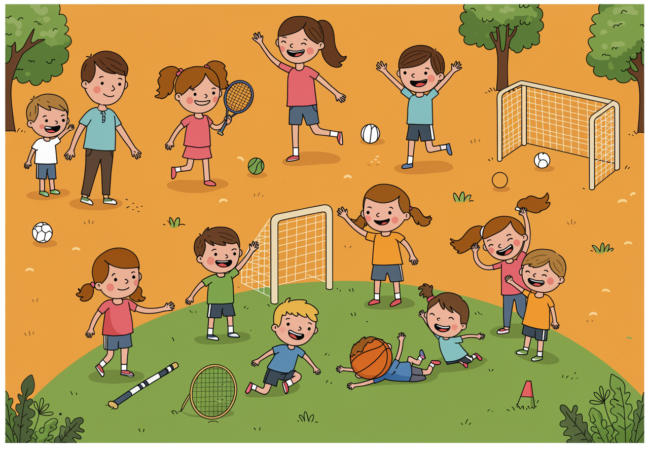Tactile learning is a learning style that involves hands-on experiences and physical interactions with the environment. This type of learning can be especially beneficial for children who have a preference for using their sense of touch to explore and understand the world around them. By incorporating home activities for tactile learning into kids daily routine, parents can help their children develop their sensory skills and improve their overall learning experience.
Understanding Tactile Learning
Before diving into the different activities, it’s important to understand the importance of tactile learning and the characteristics of tactile learners.
When we delve deeper into the realm of tactile learning, we uncover a world where hands-on experiences reign supreme. Tactile learning is not just a teaching method; it’s a gateway to a holistic understanding of the world around us. By actively engaging our hands and senses, we forge connections between abstract concepts and tangible realities. This interactive approach fosters a deeper level of comprehension and retention, making learning a dynamic and immersive experience.
The Importance of Tactile Learning
Tactile learning plays a crucial role in a child’s development as it allows them to actively engage in the learning process. By using their hands and senses, children can make connections between abstract concepts and real-world applications. Tactile learning also helps develop fine motor skills, hand-eye coordination, and spatial awareness.
Furthermore, tactile learning nurtures creativity and problem-solving skills by encouraging individuals to explore, experiment, and manipulate their environment. This hands-on approach not only enhances academic performance but also cultivates a sense of curiosity and a passion for discovery that extends far beyond the classroom.
Characteristics of Tactile Learners
Tactile learners typically exhibit certain characteristics that indicate their preference for hands-on experiences. These learners may enjoy activities such as building with blocks, playing with clay, or exploring different textures. They often excel in subjects that involve physical interaction, such as science experiments or art projects. Tactile learners may also fidget or have difficulty sitting still for extended periods.
Moreover, tactile learners possess a keen sense of observation and a knack for learning through trial and error. Their inquisitive nature drives them to seek out new experiences and engage with their surroundings in a tangible way. This hands-on approach not only caters to their learning style but also empowers them to explore their interests and talents in a dynamic and interactive manner.
Setting Up Your Home for Tactile Learning
To create a tactile-friendly environment at home, consider the following tips:
Creating a Tactile-Friendly Environment
Designate a specific area in your home for tactile activities. This could be a corner of the living room or a dedicated playroom. Make sure this space is well-lit and organized, with easy access to materials and resources.
Additionally, consider incorporating elements like soft rugs or cushions to create a cozy and inviting atmosphere. Natural materials such as wood or stone can also add a tactile element to the space, enhancing the sensory experience for your child.
Necessary Materials for Tactile Activities
Gather a variety of materials that stimulate the sense of touch, such as playdough, sand, textured fabrics, and objects with different shapes and sizes. These materials can be used for various activities and experiments tailored to your child’s age and interests.
Explore incorporating sensory bins filled with items like rice, beans, or water beads to provide different tactile experiences. You can also include items with varying temperatures, such as warm water for water play or cool gel packs for a contrasting sensation.
Tactile Learning Activities for Different Age Groups
Now, let’s explore some tactile learning activities suitable for different age groups:
Tactile Activities for Toddlers
For toddlers, focus on activities that develop their fine motor skills and sensory exploration. Examples include finger painting, playing with sensory bins filled with different textures, or creating sensory bottles with colorful liquids and objects. These activities not only stimulate their senses but also enhance their hand-eye coordination and creativity. You can also introduce activities like squishing playdough, exploring different textured fabrics, or playing with water and sand tables to further engage their tactile senses.
Tactile Activities for Preschoolers
Preschoolers can engage in more complex tactile activities. Encourage them to mold shapes with clay, participate in science experiments, or create collages using different materials like buttons, feathers, and fabrics. Exposing them to various textures, shapes, and sizes will help expand their sensory experiences. In addition to these activities, you can also incorporate nature walks where they can touch different leaves, rocks, and flowers to learn about the natural world through tactile exploration. Another fun idea is to set up a sensory scavenger hunt where they have to feel different objects and guess what they are.
Tactile Activities for School-Aged Children
For school-aged children, incorporate tactile learning into their academic subjects. Use manipulatives such as counters and blocks to teach math concepts, conduct science experiments that involve touch and observation, or encourage them to build models to represent historical events or scientific phenomena. These hands-on activities not only make learning more engaging but also help solidify their understanding of abstract concepts. Additionally, you can introduce activities like pottery classes, woodworking projects, or gardening to provide them with opportunities to explore tactile experiences in a structured and educational manner.
Incorporating Tactile Learning into Everyday Activities
Beyond dedicated tactile activities, there are various ways to incorporate tactile learning into everyday routines. Let’s explore a couple of examples:
Tactile Learning in the Kitchen
Involve your child in cooking and baking activities. Encourage them to feel and mix different ingredients, knead dough, or chop fruits and vegetables. This not only exposes them to a variety of textures but also teaches them important life skills.
Furthermore, you can introduce your child to the world of spices and herbs, allowing them to touch, smell, and taste various seasonings. This sensory exploration can enhance their understanding of different flavor profiles and create a deeper appreciation for diverse cuisines.
Tactile Learning in the Garden
Engage your child in gardening activities, allowing them to feel the soil, plant seeds, and harvest fruits and vegetables. Gardening not only provides a tactile experience but also fosters a sense of responsibility and connection with nature.
In addition to traditional gardening, consider incorporating sensory plants like lavender, mint, or lamb’s ear into your garden. These plants offer unique textures and scents that can stimulate your child’s senses and introduce them to the concept of using plants for sensory exploration and relaxation.
Measuring Progress in Tactile Learning
It’s important to recognize and acknowledge your child’s progress in tactile learning. Here are a couple of strategies:
Recognizing Improvement in Tactile Skills
Highlight your child’s achievements and improvements in their tactile skills. Praise their ability to manipulate objects, identify different textures, or describe their sensory experiences. Encourage them to explore new materials and challenge themselves.
Encouraging Continued Tactile Learning
Promote a lifelong love for tactile learning by providing opportunities for ongoing exploration and growth. Offer new activities, books, or games that stimulate the sense of touch. Show enthusiasm for their discoveries and support their curiosity.
By incorporating practical and exciting tactile learning activities into your home, you can create a stimulating environment that fosters your child’s development and love for exploration. Embrace the hands-on approach and watch as your child’s learning experiences become more engaging and meaningful.
Furthermore, consider setting up a dedicated sensory corner in your home where your child can freely explore various textures, shapes, and objects. This designated space can serve as a safe haven for your child to engage in tactile activities without any distractions, allowing them to focus solely on their sensory experiences and learning.
Additionally, involve your child in everyday tasks that involve tactile sensations, such as cooking together, gardening, or even sorting laundry by texture. These practical activities not only enhance their tactile skills but also provide valuable opportunities for bonding and learning in a real-world context. Encourage them to describe the textures they encounter and discuss how different materials feel against their skin.
You might be interested:



